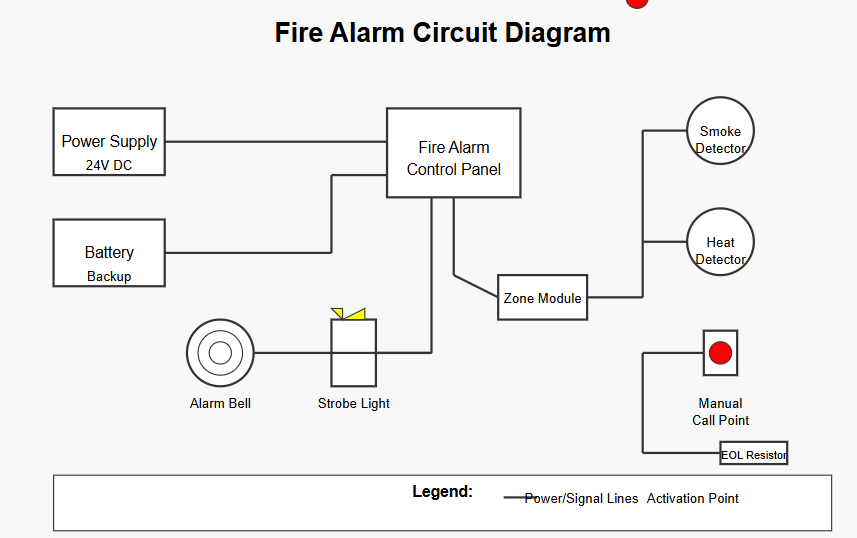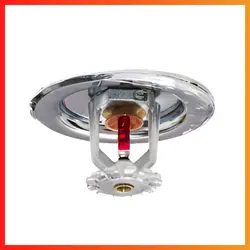Table of Contents
ToggleFire Alarm Circuit : Specifications
- Audible and visual alarm output
- Designed for quick and easy installation
- Suitable for residential and commercial use
- Built-in test function for maintenance checks
- Battery backup ensures continuous operation
- Operates on low voltage for energy efficiency
- Compatible with smoke, heat, and flame detectors
Category: Fire Alarm System
Description
The Fire Alarm Circuit is a fundamental component for fire detection, providing reliable performance and rapid response during emergencies.
Function
The Fire Alarm Circuit monitors connected detectors and triggers audible and visual alarms during a fire. It ensures quick detection and alerts building occupants, minimizing potential damage and providing time for evacuation.
General Components in a Circuit Diagram of Fire Aarm
This fire alarm system circuit diagram shows the essential components of a basic fire detection and alarm system:
- Power Supply (24V DC) – The main power source for the system
- Battery Backup – Provides power during main power failures
- Fire Alarm Control Panel – The central unit that monitors inputs and controls outputs
- Detection Devices:
- Smoke Detector – Detects smoke particles in the air
- Heat Detector – Activates when temperature exceeds a threshold
- Manual Call Point – For human-activated alarms in emergencies
- Notification Devices:
- Alarm Bell – Audible notification
- Strobe Light – Visual notification
- Zone Module – Monitors a specific area of the building
- End of Line (EOL) Resistor – Allows the system to monitor for wire faults
The simple fire alarm circuit diagram shows how these components are interconnected in a typical installation. The control panel receives signals from the detection devices and activates the alarm devices when a fire condition is detected.

5 Benefits of Fire Alarm Circuit
- Easy installation.
- Low power consumption.
- Fast and reliable fire alert.
- Supports multiple detectors.
- Continuous operation during power outages.
FAQ
The BC547 transistor is used in fire alarm systems as a switch that detects small electrical signals from sensors and triggers the alarm when smoke or heat is detected.
A fire alarm system is wired with:
- Power supply (AC with battery backup)
- Control panel as the central hub
- Initiating devices (smoke/heat detectors, pull stations) wired in parallel
- Notification devices (horns, strobes) on separate circuits
- End-of-line resistors to monitor circuit integrity
- Either Class A wiring (loop configuration) or Class B wiring (linear)
- Zone separation in larger buildings
Addressable systems use digital communication over fewer wires, with each device having a unique ID.






